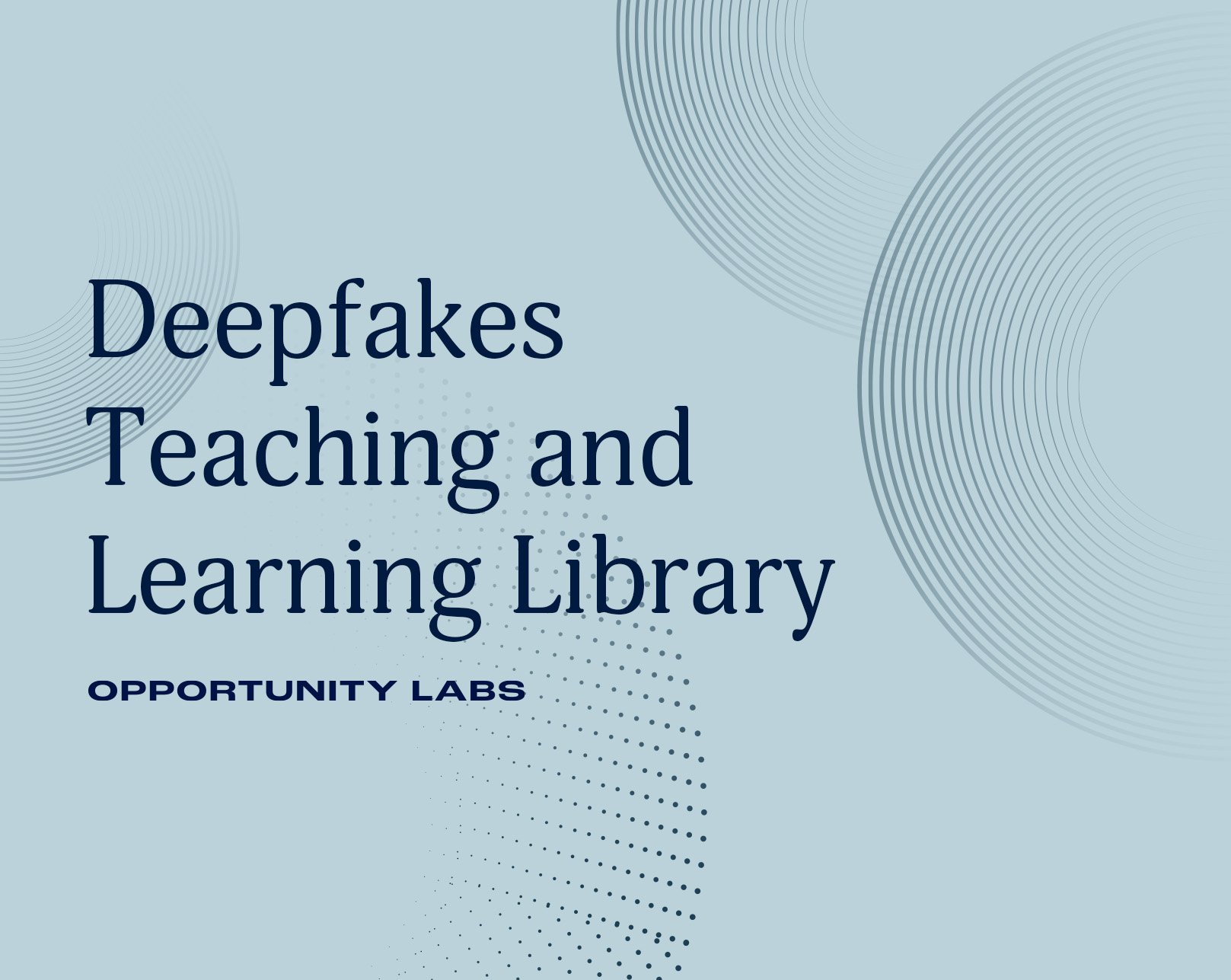Kids and Deepfakes Don't Mix
Tools, resources, and a support network to help states, districts, and schools mitigate and respond to Deepfake incidents.
Why This
To successfully carry out their missions, State Departments of Education, Local Education Agencies, and schools need to know how they can protect their communities, staff, and students from the disruptions caused by Deepfakes.
Why Now
Deepfakes, whether created using school equipment or personal devices, at home or on campus, can disrupt the entire school community. They spread quickly, damage relationships, harm school culture, and negatively affect youth mental health. Every state needs to issue guidance to support districts and schools.
Who This Resource is For
This resource is primarily for State Departments of Education, Local Education Agencies, and schools. Secondarily, it can also be used by researchers as a tool to think about advancing the evidence around the impacts of Deepfakes and how to prevent them.
How to Use This Resource
This resource offers State Departments of Education, Local Education Agencies, and schools tools and information that may inform their development of guidance and policies aimed at mitigating and responding to incidents involving Deepfakes.
Explore Our Resources
End Deepfakes in K-12 Education Network
This new network unites state departments of education from across the country to develop and share context-specific best practices for districts and schools, ensuring that Deepfake policies and protocols focus on prevention and preparedness rather than crisis response. Members will engage in facilitated, collaborative experiences with a national network of leaders actively working to end Deepfakes, access subject matter expertise, and explore effective strategies that inform policy and practice at the national level. Through this collaboration, we will learn together to create solutions that provide valuable feedback to the federal government—fostering a coordinated, nationwide effort to address Deepfake challenges in K-12 education. To learn more, get in touch.
FAQ
-
Opportunity Labs is a national 501c3 nonprofit organization working to promote youth thriving.
-
A Deepfake is a digital forgery produced using AI, Generative AI, or other digital technologies to alter, synthesize, or superimpose images, audio, or video in a manner that convincingly simulates real people, actions, or events. Deepfakes often fuel sexual abuse, and harassment. A Deepfake could also be created, directed, or produced with the consent of the person(s) depicted or portrayed but then distributed, posted, or shared in a manner that recontextualizes them to mislead or deceive by making it appear as though individuals have said or done things that they did not actually say or do.
-
Artificial Intelligence (AI) refers to systems or machines that mimic human cognitive functions—such as learning, reasoning, or problem-solving—and can iteratively improve their performance based on the data they process. These systems or machines often make predictions or recommendations by analyzing large datasets, using methods like machine learning, deep learning, and natural language processing. There are legitimate, appropriate, and expected uses of AI for academic purposes in a school setting; this policy focuses on the non-academic use of AI, and the attendant special considerations for privacy, safety, and ethics.
-
Generative Artificial Intelligence (Generative AI) is a subset of AI focused on creating new content—such as text, images, audio, or video—by detecting and reproducing patterns from large datasets. Rather than simply making predictions or classifications, Generative AI tools can produce novel outputs that mirror the style and structure of the data on which they were trained. Examples include language models that generate written content and image-generating tools that produce artwork.
-
Deepfakes pose significant risks to kids, with victims experiencing impacts to their mental health, emotional safety, and physical wellbeing. Existing laws and school policies are insufficient to protect students from the dangers of Deepfakes, leaving them vulnerable to harm.
-
No. While Deepfake technology can potentially be used creatively or educationally—for example, making engaging learning materials or storytelling—it is frequently misused in ways that can mislead, manipulate, or harm young people.
-
While the technology itself is new, the harms caused by Deepfakes often mirror challenges schools have been addressing for years — such as bullying, cyberbullying, harassment, and the spread of harmful content. What’s different is the scale, speed, and realism made possible by AI, which can amplify the damage and make it harder to detect or disprove.
-
No, Generative AI isn’t inherently bad, but like any technology, its misuse can have harmful consequences.
-
Schools can protect students from Deepfakes by updating their existing policies on Acceptable Technology Use, Harassment, Bullying, and Cyberbullying to specifically address Deepfakes and their harmful impacts. This includes educating students, staff, and families on risks of Deepfakes, implementing clear reporting channels, and ensuring that policies reflect on campus and off-campus behavior.
-
This resource addresses Deepfakes through a comprehensive approach that extends beyond technology. We believe tackling cultural, social, and behavioral aspects is essential to preventing harm. A forthcoming catalogue of educational and social-norming resources will further support these efforts.
-
Social norming plays a crucial role in addressing Deepfakes, moving beyond schools to include other influential community leaders, youth sports organizations and coaches, and religious leaders. By building collective awareness, we can shift societal perceptions and behaviors for a more responsible and informed response to Deepfakes and their impact on kids.
-
a comprehensive Research Agenda to extend the evidence base of Deepfakes
a Framework to amend or create new policies to address Deepfakes
an Incident Response Guide that provides district and school leaders–e.g., teachers, school-based health staff, school and district administrators–with a step-by-step set of actions to consider
-
Share your contact information here to stay updated on new resources and opportunities.
In Their Words
Contact Us
For more information about our Network offering, or to stay updated on new resources and opportunities, please fill out the form here.











